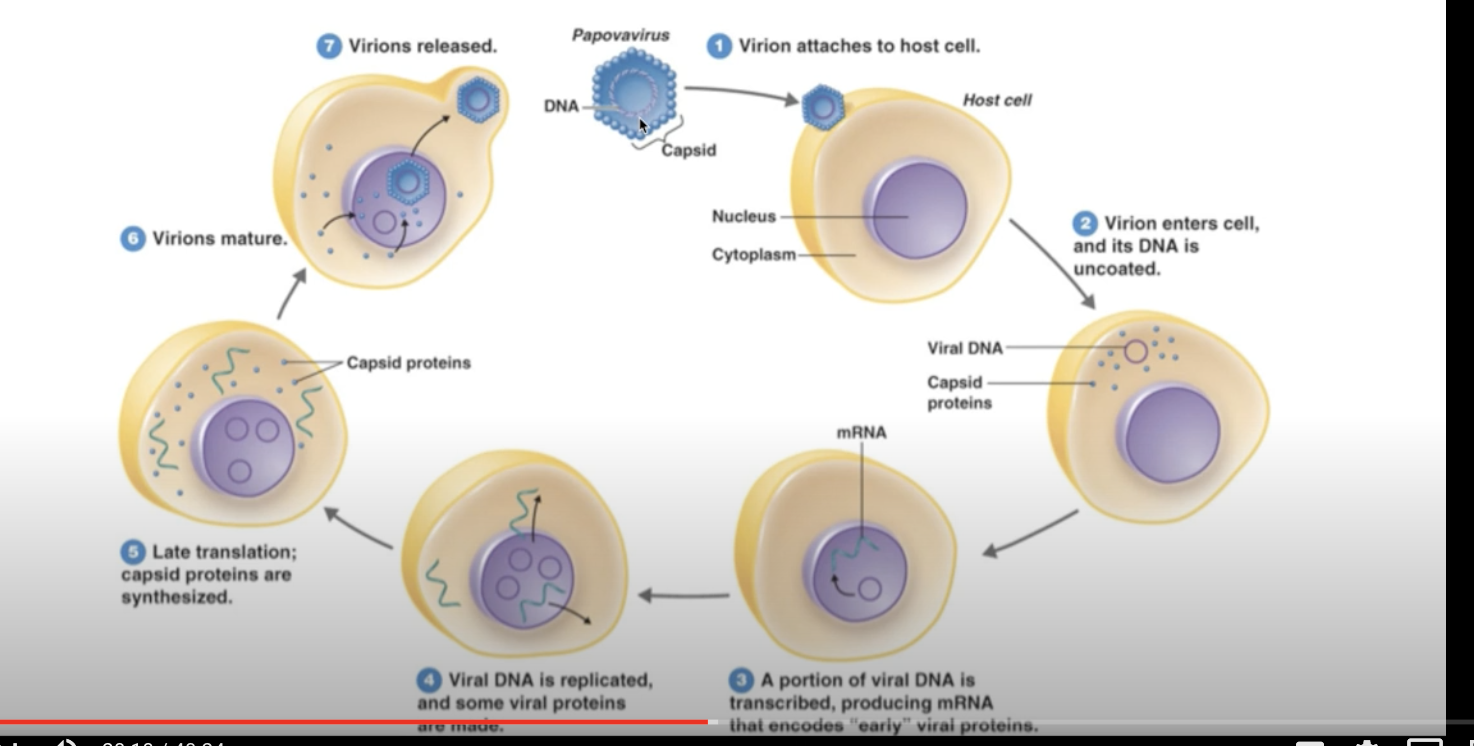Table of Contents
1 Viral Replication
This is the process by which the genetic material virus (and by proxy its whole) is replicated through hijacking the host cell's KBhBIO101CentralDogma processes. To investigate this, we ask two questions:
- How are viral mRNAs produced from the viral genome? => virus will hijack the ribosomes in the host cells. So, it is more important to ask how the mRNAs are produced to tell ribosomes what to do
- What serves as the template for viral genome replication => replication will need a polymeraese; but the source and mechanism is dependent on viral genome structure/composition
1.1 For DNA Viruses
1.1.1 How are viral mRNAs produced from the viral genome?
- Viral DNA enters, through RNA polymerase II in the host cell, mRNA is produced
- mRNAs then read by ribosomes, and there we go
1.1.2 What serves as the templates for viral genome replication?
- Viral DNA serves as template for host cell DNA polymerase
- Viral genome copied repeatedly
- Virus, then, will be replicated within the nucleus due to it needing the host polymerase to copy DNA
Except! Poxvirade viruses carry their own polymerase, so they replicate in the cytoplasm by simply entering and releasing the polymerease.

Figure 1: Screen Shot 2020-10-12 at 11.09.46 PM.png
1.2 RNA Viruses
1.2.1 How are viral mRNAs produced from the viral genome?
Depends on what KBhBIO101SenseAndAntisense the viral RNA is, there are different processes
- If the virus is carrying +SS RNA, they do not need to produce anything because that is directly translatable by the host ribosomes
- If the virus is carrying -SS RNA (which is useless by itself as it is the template RNA, making it harder to detect), they would trigger the process of RNA replication either using their own RNA-dependent RNA polymerease or using that of the host cells
- If the virus is carrying both, it will infect with both +-stranded and –stranded RNA, but the latter requires conversion
1.2.2 What serves as the templates for viral genome replication?
- with dsRNA; takes +ssRNA and makes -ssRMA; combining the two to produce dsRNA
- with +ssRNA, takes +ssRNA and makes temporary -ssRNA which makes more +ssRNA
- with -ssRNA, takes -ssRNA, and makes temporary +ssRNA, which makes -ssRNA
Instead of waiting for the RNA-dependent-RNA polymerease of the cell, viruses sometimes decide to just bring-your-own-polymerease to catalyze this process.